| |
|
|
46.
| History is not mine |
| |

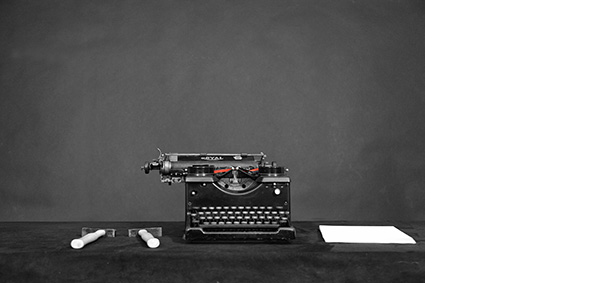
2013, pigment print on Fine art, 70 x 46 cm each one.
Exhibition view from Fragmented Memory, Goodman Gallery, 2017, Johannesburg.
Courtesy of the artist and Ceysson & Bénétière, Paris.
Ed. of 5 + 2 A.P.

2013, pigment print on Fine art, 70 x 46 cm each one.
Exhibition view from Fragmented Memory, Goodman Gallery, 2017, Johannesburg.
Courtesy of the artist and Ceysson & Bénétière, Paris.
Ed. of 5 + 2 A.P.
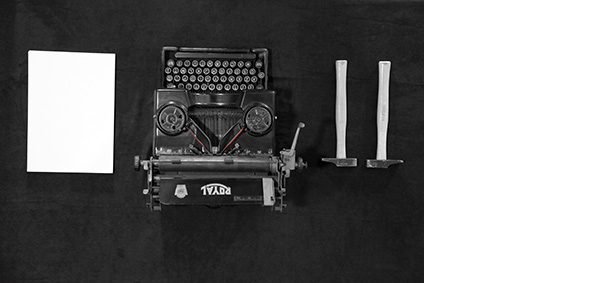
2013, pigment print on Fine art, 70 x 46 cm each one.
Exhibition view from Fragmented Memory, Goodman Gallery, 2017, Johannesburg.
Courtesy of the artist and Ceysson & Bénétière, Paris.
Ed. of 5 + 2 A.P.
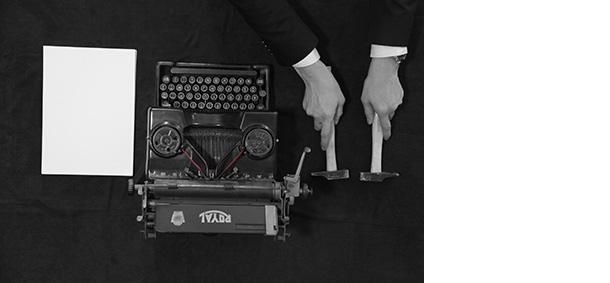
2013, pigment print on Fine art, 70 x 46 cm each one.
Exhibition view from Fragmented Memory, Goodman Gallery, 2017, Johannesburg.
Courtesy of the artist and Ceysson & Bénétière, Paris.
Ed. of 5 + 2 A.P.
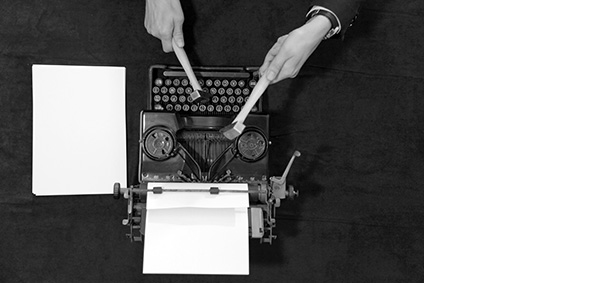
2013, pigment print on Fine art, 70 x 46 cm each one.
Exhibition view from Fragmented Memory, Goodman Gallery, 2017, Johannesburg.
Courtesy of the artist and Ceysson & Bénétière, Paris.
Ed. of 5 + 2 A.P.
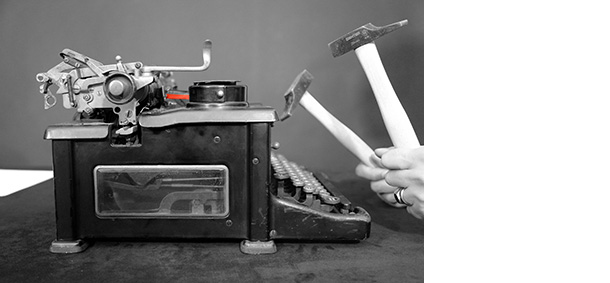
2013, pigment print on Fine art, 70 x 46 cm each one.
Exhibition view from Fragmented Memory, Goodman Gallery, 2017, Johannesburg.
Courtesy of the artist and Ceysson & Bénétière, Paris.
Ed. of 5 + 2 A.P.
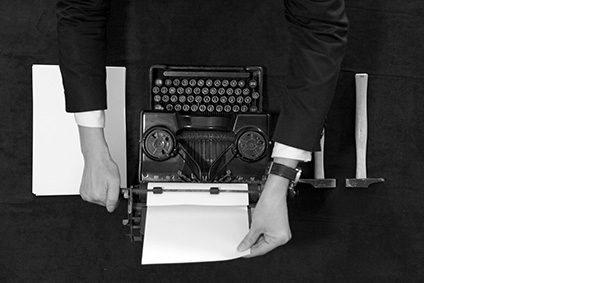
2013, pigment print on Fine art, 70 x 46 cm each one.
Exhibition view from Fragmented Memory, Goodman Gallery, 2017, Johannesburg.
Courtesy of the artist and Ceysson & Bénétière, Paris.
Ed. of 5 + 2 A.P.
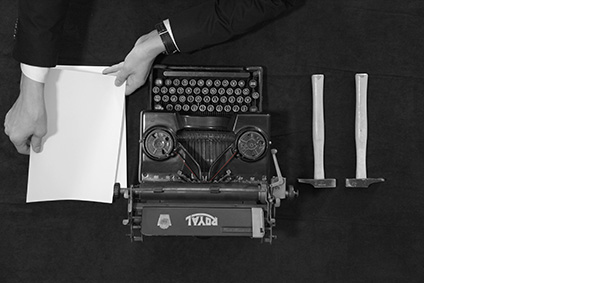
2013, pigment print on Fine art, 70 x 46 cm each one.
Exhibition view from Fragmented Memory, Goodman Gallery, 2017, Johannesburg.
Courtesy of the artist and Ceysson & Bénétière, Paris.
Ed. of 5 + 2 A.P.
'' History is not mine shows the Moroccan artist typing on a typewriter an answer to his detractors who censored him in 2012. He is seen hitting the keys of a typewriter, only with two hammers.
It’s a way of denouncing the violence of the words that accuse him, or that institutional discourses can convey.
It’s also a way of underlining the weight of words and their concrete implications in the world. ''
François Salmeron, Paris-art, February 2014
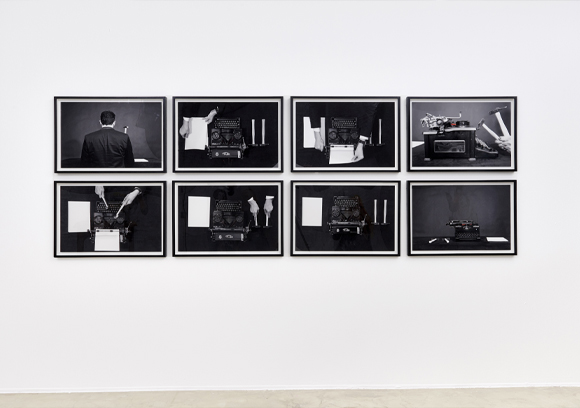
History is not mine
Exhibition view from Fragmented Memory, Goodman Gallery, 2017, Johannesburg.
Courtesy of the artist.
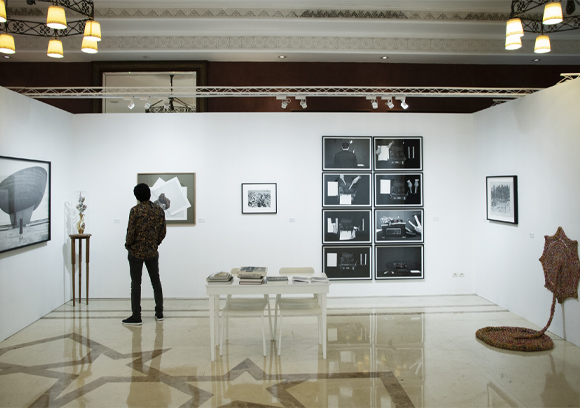
History is not mine
Exhibition view from 1:54 Marrakech, 2019, Marrakech.
Courtesy of the artist.
|
|
|
|
|
| This work was part of 10ème Biennale Africaine de la Photographie - Telling Time, Bamako, 2015.
La série de photographies intitulée History is not Mine de mounir fatmi reprend la narration de sa vidéo éponyme. Ces clichés dont la seule couleur reste le ruban rouge sang, met en scène un homme dont le visage reste invisible et son action de frapper sur le clavier d’une machine à écrire avec des marteaux. Cette série de photographie, tout comme la vidéo peut être considérée comme une réponse directe au Printemps de Septembre de Toulouse (2012), dont le titre était L’Histoire est à moi. A cette occasion, Technologia, une installation de mounir fatmi mêlant des versets coraniques circulaires à des éléments inspirés des Rotoreliefs de Marcel Duchamp, avait été retirée par l’organisation suite à des incidents provoqués par le public. La même la vidéo Sleep Al Naïm hommage à Salman Rushdie est censurée à l’Institut du Monde Arabe à Paris. Ces événements ont marqué le plasticien et engendré tant une prise de conscience qu’une « déception ».
Cette série de photographie, tel le story board de la vidéo éponyme, décompose l’action en reprenant les différents plans. Cette succession de prise de vue, donne un aspect dramatique à l’action de frapper sur un clavier avec des marteaux.
Le spectateur avec cette série de photographie, est, tout comme dans la vidéo, omniscient. Partageant à la fois la vision de la machine avec l’artiste mais surplombant la scène aussi par les plans en plongé.
Par ses prises de vues différentes, le spectateur a donc un regard intérieur et extérieur de l’œuvre et l’action de frapper à la machine. Ainsi, en ne montrant jamais le visage de l’homme tapant à la machine, mounir fatmi encourage le spectateur à s’identifier à sa propre expérience. Cette série de photographies engage donc le spectateur à prendre conscience de sa posture vis-à-vis de l’histoire. Tout à chacun étant à la fois partie prenante, sans posséder la maitrise entière des situations, mais aussi spectateur.
Studio Fatmi, Decembre 2016.
|
|
mounir famti’s photographic series entitled History is not Mine resumes the narration of his eponymous video. These images, in which a ribbon of blood red is the only color present, depict a man whose face remains concealed as he strikes the keyboard of a typewriter with hammers. This series of photographs, just like the video, can be seen as a direct response to Printemps de Septembre de Toulouse (2012) (Toulouse’s Spring of September) which bore the title L’Histoire est à moi (History is mine). On this occasion, Technologia, mounir fatmi’s installation that combined circular Koranic verses with elements inspired by Marcel Duchamp’s Rotoreliefs, had been withdrawn by the organization following incidents provoked by the public. Similarly, the Sleep Al Naïm video, a tribute to Salman Rushdie, was censored at the Arab World Institute in Paris. These events left a mark on the visual artist and engendered an awareness as well as a “disappointment.”
This series of photographs, like a storyboard for the eponymous video, breaks down the action into different shots. This succession of captured images gives a dramatic aspect to the action of hitting a keyboard with hammers.
As with the video, the spectator becomes omniscient with this series of photographs by sharing the image of the machine with the artist, and by overlooking the scene with angled shots. With different points of view, the spectator has an interior and exterior view of the piece and the action of striking the machine. By never showing the man’s face, mounir fatmi therefore encourages the viewer to identify with his or her own experience. This photographic series prompts the viewer to become aware of his or her stance vis-à-vis history. Everyone is a participant, without possessing complete control of the situations, but also an observer.
Studio Fatmi, December 2016.
Traduit du français par Christina Washington.
|
|
|
|